Spontaneous Grace â a testimonial to Pauline Oliveros at 80 ...
Spontaneous Grace â a testimonial to Pauline Oliveros at 80 ...
Spontaneous Grace â a testimonial to Pauline Oliveros at 80 ...
Create successful ePaper yourself
Turn your PDF publications into a flip-book with our unique Google optimized e-Paper software.
<strong>Spontaneous</strong> <strong>Grace</strong> – a <strong>testimonial</strong> <strong>to</strong> <strong>Pauline</strong> <strong>Oliveros</strong> <strong>at</strong> <strong>80</strong>Michael Century, May 10, 2012Composer, improviser, performer, performance artist, instrument builder,software designer, DIY hardware hacker, feminist icon, essayist, theorist,New York Times op-ed contribu<strong>to</strong>r, ace softball pitcher, martial arts expert,music philosopher, champion of the disabilities movement, humanitarian,found<strong>at</strong>ion direc<strong>to</strong>r, revered teacher, deep listener… And last but by nomeans least, warm and generous colleague.I begin this <strong>testimonial</strong> <strong>to</strong> <strong>Pauline</strong> <strong>Oliveros</strong> with a simple list of <strong>at</strong>tributes, <strong>to</strong>indic<strong>at</strong>e th<strong>at</strong> she is not just a woman of parts; but a woman who brings<strong>to</strong>gether many parts in a particular way: as a multiplicity (from the L<strong>at</strong>inmultiplex, consisting of many elements in a complex rel<strong>at</strong>ionship). I’ll comeback <strong>to</strong> this idea shortly.First I will speak of <strong>Pauline</strong> as a colleague, in the Department of the Artshere <strong>at</strong> Rensselaer. Her classes, research seminars, advising, particip<strong>at</strong>ionin gradu<strong>at</strong>e critiques and thesis committees enrich the lives of all <strong>to</strong>uched bythem. She infuses the normal routines of academia with her own specialvalues– emp<strong>at</strong>hy and rigor, wisdom and spontaneity, generosity and grace.Her transform<strong>at</strong>ive influence on countless students around the world islegendary. Recently we have embarked on the challenging project ofconceiving a new undergradu<strong>at</strong>e major in music, premised on a 21 st centurymusicianship: combining theory and practice, composition andimprovis<strong>at</strong>ion; technology and new scientific knowledge of perception andcognition – a vision of 21 st century musicianship th<strong>at</strong> you would look hardamong current music conserva<strong>to</strong>ries or music departments <strong>to</strong> find even an
inkling of. So as a colleague, there could nothing more inspir<strong>at</strong>ional than <strong>to</strong>have the very embodiment of your vision sitting amongst you. <strong>Pauline</strong>makes it necessary for us <strong>to</strong> rise <strong>to</strong>ward a high standard, <strong>to</strong> be in a way betterthan ourselves.Now <strong>to</strong> go back some decades, 31 years <strong>to</strong> be precise, when I first met with<strong>Pauline</strong>. It was <strong>at</strong> the Banff Centre in Canada, where we had the privilege ofbringing <strong>Pauline</strong> for an experimental workshop on Improvis<strong>at</strong>ionalComposition. It was my first glimpse of performance art – she collabor<strong>at</strong>edwith Linda Montano and the young artists in the program <strong>to</strong> cre<strong>at</strong>e a feministmusical Cinderella. Also this was my first look in<strong>to</strong> group improvis<strong>at</strong>ionand sonic medit<strong>at</strong>ion. Word about her week-long residency got out, andpeople came from all over, <strong>to</strong> share in the experience. So I was introduced<strong>to</strong> the as<strong>to</strong>nishing power of her presence, the unique connections betweenspirituality and musicality, the power <strong>to</strong> bridge capacities and abilitiesthrough art. Here was something challenging and profound, and it markedme even if I didn’t really grasp the significance <strong>at</strong> the time: an open kind ofmusical process and form, elev<strong>at</strong>ing listening itself <strong>to</strong> particip<strong>at</strong>ion.I spoke earlier of <strong>Pauline</strong>’s <strong>at</strong>tributes and roles as a multiplicity. In using th<strong>at</strong>word I am thinking of the way philosophers have had two ways of talkingabout the rel<strong>at</strong>ionships between many elements. There can be multiplicitiesth<strong>at</strong> are discrete, and those th<strong>at</strong> are continuous. The discrete multiplicitydivides things up in<strong>to</strong> non-overlapping elements, each separ<strong>at</strong>ed from theother, quantit<strong>at</strong>ive, sp<strong>at</strong>ial. In the continuous multiplicity, borders betweenelements are porous, they inter-penetr<strong>at</strong>e, flow in<strong>to</strong> one another. Thecontinuous multiplicity is dur<strong>at</strong>ional, occupying time, not space.
I think of <strong>Pauline</strong>’s many roles and achievements as the second kind ofmultiplicity, qualit<strong>at</strong>ive, continuous, dur<strong>at</strong>ional, and this is also <strong>at</strong> the core ofher deep listening philosophy and practice. In a provoc<strong>at</strong>ive article, about10 years ago, on “quantum improvis<strong>at</strong>ion”, <strong>Pauline</strong> developed the idea th<strong>at</strong>quote "Improvis<strong>at</strong>ion is cre<strong>at</strong>ive problem solving and is a portal <strong>to</strong> quantumthinking – thinking in more than one st<strong>at</strong>e simultaneously." unquote Herewe see the futurist in <strong>Pauline</strong>, the artist always eager <strong>to</strong> understand theleading edge of scientific knowledge – who is not only fearless in the wayshe appropri<strong>at</strong>es new technologies in<strong>to</strong> her artistic work, but in the way sheenvisages the capability of the human mind and body for evolutionaryexpansion.When I think of <strong>Pauline</strong> against the long arc of music and cultural his<strong>to</strong>ry, Ithink of two strands – one is the lineage of the American musical maverick,which is near and familiar and almost entirely male; the other the femalemusical visionary, which is less familiar and perhaps more distant preciselybecause women composers and musicians so often were written out ofhis<strong>to</strong>ry, or their talent was not allowed <strong>to</strong> flourish. Speaking of theAmerican mavericks – Ives, Cowell, Varese, Partch, Nancarrow, Cage –in the liter<strong>at</strong>ure there is certain trope about them - fearless, pioneering,ruggedly individualistic, iconoclastic; and then I s<strong>to</strong>p <strong>to</strong> re-consider. Takethe word iconoclast: <strong>to</strong> sh<strong>at</strong>ter a holy image – an act of breaking asunder.Wh<strong>at</strong> if we were <strong>to</strong> flip the terms <strong>to</strong> find something more appropri<strong>at</strong>e: notthe visual, but the sonic; sonus; not <strong>to</strong> break but <strong>to</strong> reconcile or bring<strong>to</strong>gether: <strong>to</strong> make an accord, the root of which is <strong>to</strong> bring <strong>to</strong> the heart;therefore, sonaccordia, <strong>to</strong> bring sounds <strong>to</strong>gether in the heart; not
iconoclasm, not a sh<strong>at</strong>tering, but a bringing <strong>to</strong>gether of sounds in the heart.So can it be any accident th<strong>at</strong> such an artist, a sonaccordist, plays theaccordion?About the other long strand, let’s consider th<strong>at</strong> distant mistress of music andthe spirit, Hildegard von Bingen, composer, mystic, theologian, author, whoflourished in the Medieval Age, in the time of classical liberal arts, whenmusic was a fundamental aspect of learning <strong>at</strong> large, alongside m<strong>at</strong>hem<strong>at</strong>ics,astronomy as well as philosophy. Much like <strong>Pauline</strong>.Among her many accolades, I will single out just two, as particularlyrevealing. First the William Schuman prize, given 2 years ago by ColumbiaUniversity – up<strong>to</strong>wn - , the first time <strong>to</strong> a woman. Second the John Cageprize this year – down<strong>to</strong>wn – taken <strong>to</strong>gether a pairing of awards th<strong>at</strong> revealsin a nutshell the breadth of <strong>Pauline</strong>’s influence and impact. On the occasionof the Schuman prize, I wrote.Dear <strong>Pauline</strong>Your accordion spoke <strong>to</strong> me this morning. The deep bass <strong>to</strong>nes of theinstrument you’ve been loaning me mellowed as I held a single low Findefinitely. As you had suggested, I was listening for the moment I nolonger possessed any desire <strong>to</strong> hear the sound change. Clearing my mindand body of their instinctual reflex <strong>to</strong> make something interestinghappen, I felt the world shift, just a millimeter of a lurch, but enough <strong>to</strong>allow me <strong>to</strong> hear a universe of sound within just th<strong>at</strong> one note,shimmering with an infinite welcoming tenderness.Thank you <strong>Pauline</strong>.



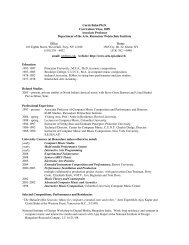
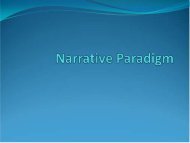
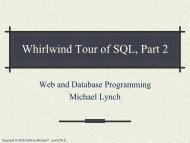
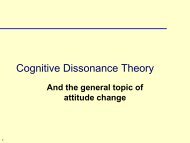
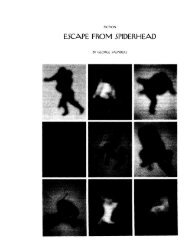
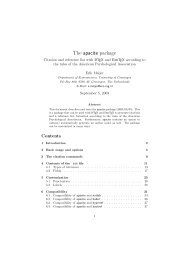
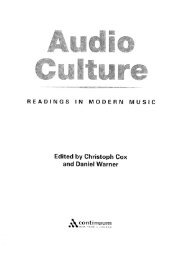

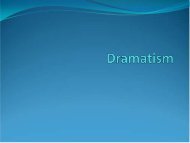

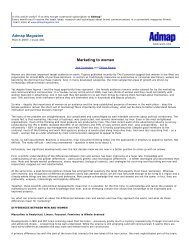
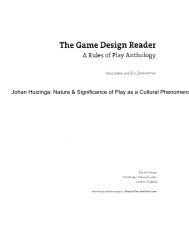
![The Game Design Document [.pdf]](https://img.yumpu.com/30117124/1/190x245/the-game-design-document-pdf.jpg?quality=85)
